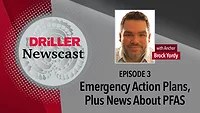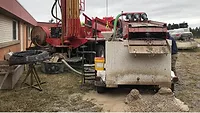Emergency Action Plans Keep Drilling Jobs Safe
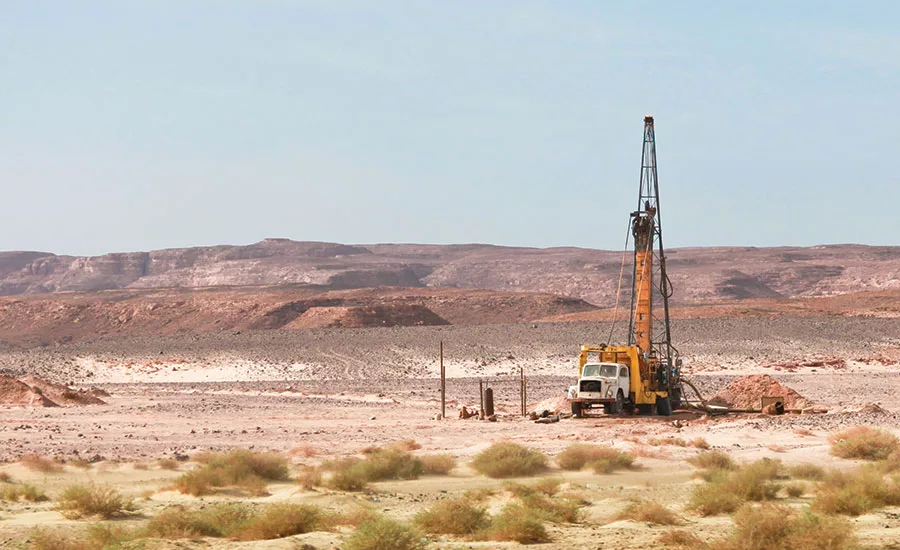
Whether you’re drilling oil and gas or water wells, working a remote location with a great view like this sure beats sitting at a desk. But it’s critical to know how to act in an emergency with help potentially far away.
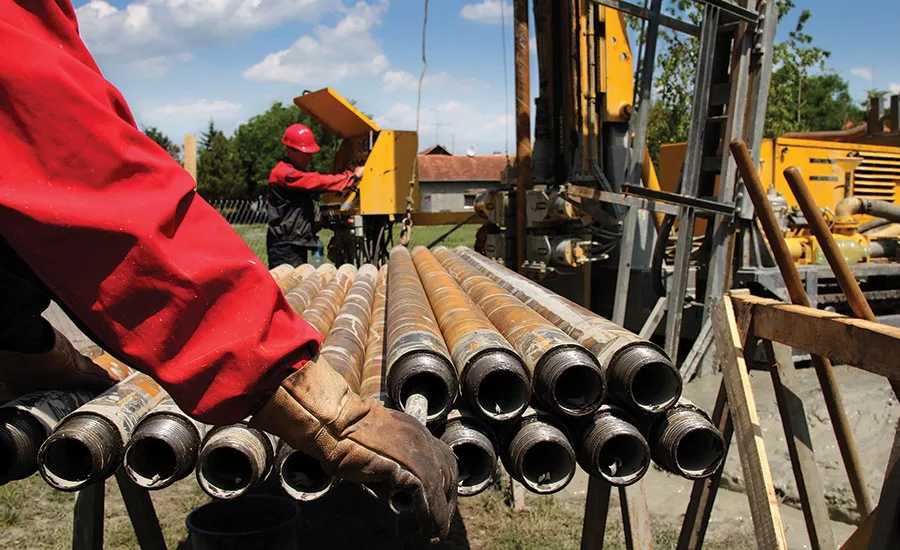
Often, only the driller and driller’s helper are on the jobsite. Having both trained in CPR and first aid can make a difference when a life is on the line.
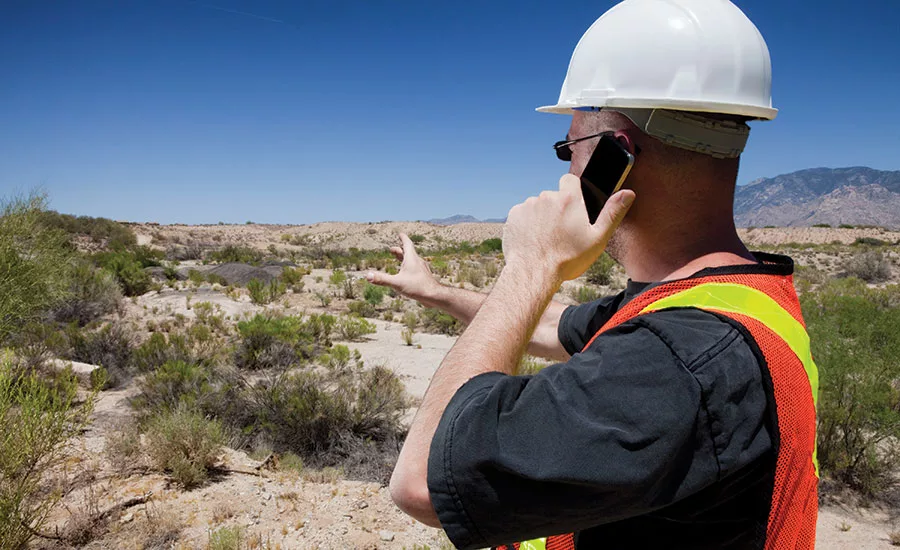
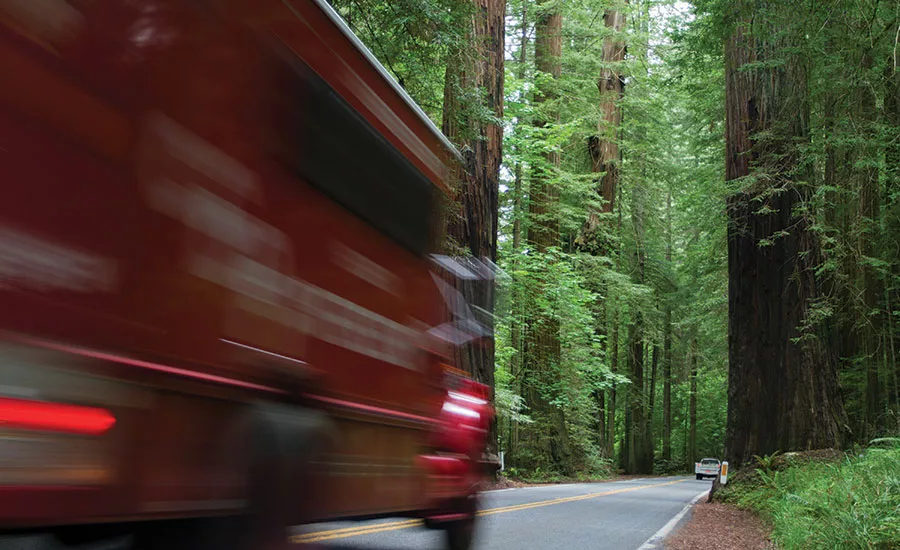
Would your instructions to 911 include the words "turn right at the large oak tree." Then it's a good idea to have everyone on the jobsite acquainted with your company's emergency plan.
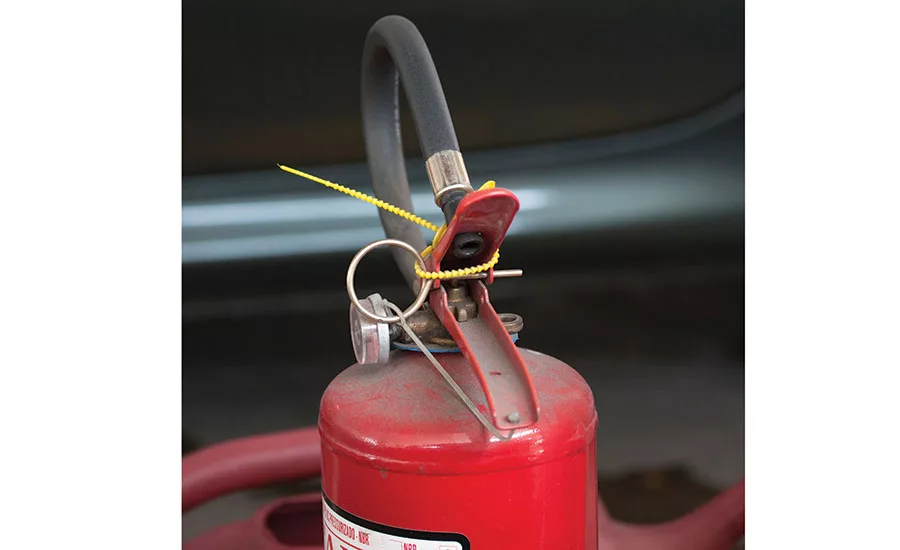
It's important to make sure your fire extinguisher is up-to-date before leaving for the jobsite.
We prepare for every drilling scenario possible, but we do not do a good enough job preparing for the worst. There are two schools of thought about dangerous situations: The first group believes it will not happen to me, and the second group expects to be eaten by wolves. I want to be safe, but I also want to be prepared to fight the wolves with everything I’ve got. We get into a rhythm on a jobsite; we know what it is going to take to finish a hole in a given area, and we just go and do it. What about the unknowns, the acts that we do not do enough to help us get into a rhythm? When we were in grade school, we had to practice what to do in case of a fire or injury. Emergency planning on a drill site is just as important as when we were in grade school.
Calling 911 and Emergency Response
This is the situation: You are on an irrigation well in the middle of a cornfield and your helper collapses on the ground. What do you do? Even worse, you are the one to collapse in the field, what does he do? Can he call 911 and guide them in from the road? How often do we jump in the rig and drive to the jobsite with the water truck following without discussing our actual location? Sure we know that we are four miles from Thompson’s Corners Party Store, and we could get back to the shop without thinking, but when your heart is racing and an emergency is happening, can you explain to the 911 operator how to get to you?
Calling 911 from a cell phone is not the same as a land line. When we dial 911 from a landline, several steps happen to ensure that emergency responders can get to you. First, a landline call goes to the local dispatcher within the area of the landline. This means the closest first responders are notified to help. Second, the dispatcher knows the address of the call. Finally, the connection between the dispatcher and caller is reliable enough to understand all communication.
When we call from a cell phone, the first three steps are thrown up in the air. It is not a guarantee that a wireless 911 call will go the local dispatcher. Often, cell phone 911 calls are received at a regional call center. The Federal Communications Commission (FCC) requires that all wireless service providers give 911 dispatchers more precise location information, specifically latitude and longitude of the caller. The GPS coordinates must be within 50 to 300 meters, depending on the area’s technology. Making cell phone GPS more reliable is an ongoing battle for the FCC, and they are limited by two big factors. First, older cell phones do not have the E911 capabilities, meaning that the phone does not have the technology to give location information. Second, the cell phone coverage is not 100 percent and the FCC has given exclusions to the area where location accuracy is technologically impossible. These areas are dense forest areas or areas with minimal towers to triangulate a caller’s location.
Here are the rules for calling 911 from a cell phone regardless of having E911 or not. Immediately tell the emergency operator your location’s address and crossroads. Next, provide them with your cell phone number in case the call is dropped. Then explain the exact situation, i.e. an ambulance is needed or there is a fire. Finally, have flares or flashy objects on hand to wave down the emergency responders. Contact your local emergency response teams to find out what the typical response time is for the area you are working. If the response time is greater than four minutes, it is important to have people trained in cardiopulmonary resuscitation (CPR) and first aid on site.
The Importance of First Aid
Once emergency responders are on the way, do you know how to render aid? On a construction site, it is typical for multiple people to be trained for emergency response. In the drilling world we do not have that luxury. Often, only two people are on site. Therefore, both employees should be trained in basic first aid. The first response to an injury is the most important. First aid that is given in the first moments after 911 is called can significantly decrease the chances of a loss of life or a slow recovery. The Heartsave courses from the American Red Cross and American Heart Association provide certifications for CPR and basic first aid. These are the steps that you should be able to perform to render assistance to an injured person, according to the American Red Cross Ready Reference:
- Check For Responsiveness: Tap the victim’s shoulders and shout “Are you OK?”
- Call 911 or the Local Emergency Number: We outlined this step above.
- Open The Airway: Tilt the victim’s head and lift his chin
- Check For Breathing: Check for no more than 10 seconds. Gasps are not breathing.
- Quickly Scan for Severe Bleeding.
Go to www.redcross.org and download the Adult First Aid/CPR/AED Ready Reference. It’s a good document to keep somewhere easy to find in the cab of the rig.
After these five first steps, the American Red Cross Ready Reference leads you through steps to take for choking; CPR; the operation of an Automated External Defibrillator or AED; controlling external bleeding; burns; poisoning; head, neck and spinal injuries; and stroke.
Finally, it is important to have a fully stocked and up-to-date, OSHA-approved first aid kit. These kits should be on the rig, water truck and all support vehicles. The paper towel and electrical tape located on the dash of the service truck does not make up a good first aid kit.
An Action Plan for Fire
In the first quarter of 2016, I have learned about 10 equipment fires on water well sites. Do you have an action plan for an equipment fire? Most plans consist of evacuating the site, calling 911 and watching it burn. In many cases, calling 911 and evacuating is the best way to handle the situation.
In regards to any emergency, protecting and saving human life is more important than any piece of equipment.
The first step to an action plan should always be employee safety. If your company is working in an area with holes that can produce flammable gas, then all employees should wear fire retardant (FR) clothing. Most severe burns and deaths happen when non-FR clothing ignites and continues to burn. FR clothing requires special care and needs to be washed properly to ensure the fire retardant stays intact.
The next step is identifying the type of fire. Is it environmental, such as downhole gas, or is it caused by equipment failure? If it is caused by gas, evacuation is the best and safest plan. However, if the fire is caused by a malfunction, such as an electrical issue or a hydraulic line breaking, there might be time to put the fire out. If your action plan includes using a fire extinguisher, use it from a safe distance. The fire extinguisher used on an equipment fire must be class B and C. It is important to ensure that your fire extinguisher is up-to-date and ready before leaving the shop. The decision for putting out a fire depends on your action plan and what collateral damage is around the equipment. If putting the fire out prevents a home fire, or even a blaze at multiple residences, then putting the fire out is the right decision.
In regards to any emergency, protecting and saving human life is more important than any piece of equipment. An action plan is an excellent way to be ready for the worse. Creating an action plan is just good business and should be a condition of every project your company goes on. When you prepare to be eaten by wolves, the situation never gets a chance to eat you.
Looking for a reprint of this article?
From high-res PDFs to custom plaques, order your copy today!




